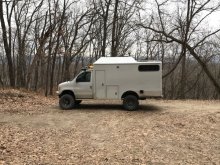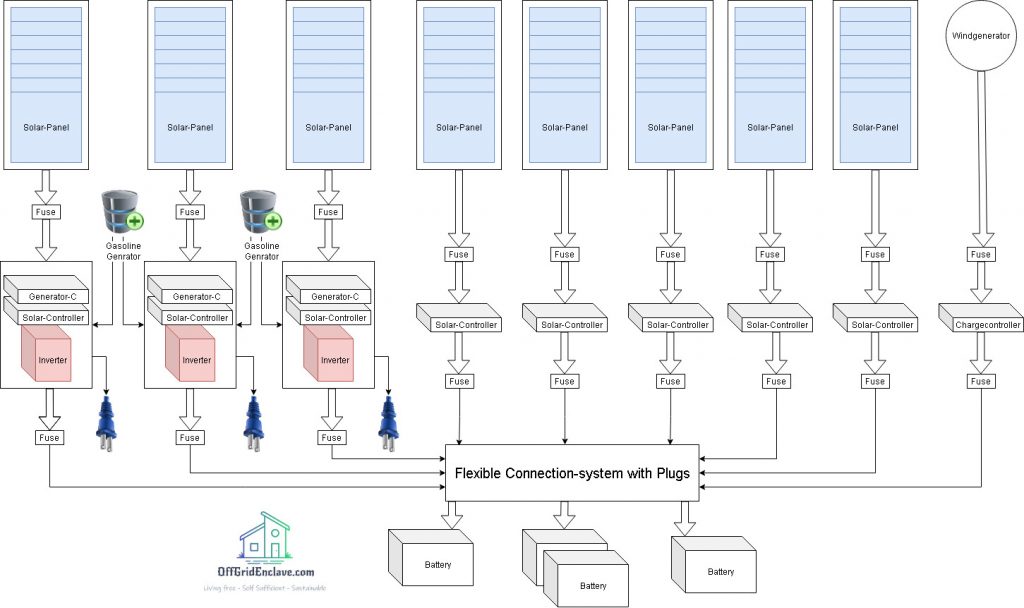Hello everyone,
I recently purchased 40 acres near lake superior in WI, and I would like to build a sort of barn/workshop/home situation. Power lines are a mile away so I'm obviously going off-grid, which I'm happy about! Use in the coldest winter months when solar energy is at its weakest may be limited because I generally travel south. I have built several smaller (sub 1kw) systems for campervans and travel trailers and I plan to build this new system myself, but my knowledge of these systems is fairly basic.
It would be pretty straight forward if it weren't for the "workshop" aspect of my plans. I would like to be able to run welders, grinders, air compressor, drill press, table saw, well pump, etc, and hopefully even a hydraulic two post lift. Bear in mind, this equipment won't be used all day every day, just sporadic, hobbyist use. A generator to supplement power during heavy loads and cloudy days is probably going to be a thing. My budget for the solar system is $10-20k. Am I out of my mind, or is this in the realm of possibility?
I have barely scratched the surface with my research and planning, but so far my assumptions are that I will be running a 240v inverter, 48v battery bank, and 5kw+ PV on tilt-able mounts. Not sure if lithium or lead acid, I do like the idea of a used electric car battery bank. I'm also interested in running a generator on wood gas eventually, but that's for a different forum.
I'm hoping you folks can help me determine if this is even realistic within my budget, and if it is, help me start to plan a system that will meet these needs. (or most of them)
Thanks,
Dylan
P.S. Here's a photo of my current home (self built ambulance rv 4x4 conversion, more or less what I will be building in this workshop) with 300w on the roof, 300ah AGM, and a 1500w inverter. It runs a little 12v fridge, led lighting, water pump, device charging etc. Its a little overkill for my consumption and I rarely have to charge from the alternator.

I recently purchased 40 acres near lake superior in WI, and I would like to build a sort of barn/workshop/home situation. Power lines are a mile away so I'm obviously going off-grid, which I'm happy about! Use in the coldest winter months when solar energy is at its weakest may be limited because I generally travel south. I have built several smaller (sub 1kw) systems for campervans and travel trailers and I plan to build this new system myself, but my knowledge of these systems is fairly basic.
It would be pretty straight forward if it weren't for the "workshop" aspect of my plans. I would like to be able to run welders, grinders, air compressor, drill press, table saw, well pump, etc, and hopefully even a hydraulic two post lift. Bear in mind, this equipment won't be used all day every day, just sporadic, hobbyist use. A generator to supplement power during heavy loads and cloudy days is probably going to be a thing. My budget for the solar system is $10-20k. Am I out of my mind, or is this in the realm of possibility?
I have barely scratched the surface with my research and planning, but so far my assumptions are that I will be running a 240v inverter, 48v battery bank, and 5kw+ PV on tilt-able mounts. Not sure if lithium or lead acid, I do like the idea of a used electric car battery bank. I'm also interested in running a generator on wood gas eventually, but that's for a different forum.
I'm hoping you folks can help me determine if this is even realistic within my budget, and if it is, help me start to plan a system that will meet these needs. (or most of them)
Thanks,
Dylan
P.S. Here's a photo of my current home (self built ambulance rv 4x4 conversion, more or less what I will be building in this workshop) with 300w on the roof, 300ah AGM, and a 1500w inverter. It runs a little 12v fridge, led lighting, water pump, device charging etc. Its a little overkill for my consumption and I rarely have to charge from the alternator.








